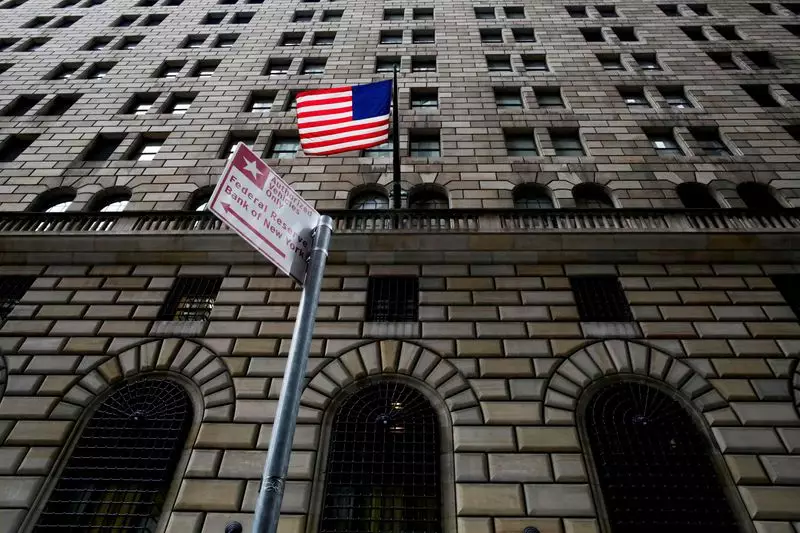In the landscape of global finance, the decisions of the U.S. Federal Reserve resonate far beyond the American borders. Recent indications from the Fed about curbing the frequency of interest rate cuts sent shockwaves through emerging markets, unveiling vulnerabilities in currencies from Brazil to Indonesia. This article seeks to dissect the implications of the Fed’s monetary policy on global currencies and analyze the consequent responses from central banks across the emerging markets.
The Federal Reserve’s unexpected stance on interest rates—hinting at less aggressive cuts—has emerged as a significant disruptor for many economies around the world. Investors, nervous about inflationary pressures linked to prospective policies from incoming administration officials, ditched emerging market investments in preference for the more stable U.S. dollar. As a result, currencies like the South Korean won, Indian rupee, and Indonesian rupiah experienced severe devaluations, with some hitting record lows. This situation exposes the underlying fragility of these currencies in the face of external shocks, emphasizing the high stakes involved in global monetary policy decisions.
The rise in U.S. Treasury yields further compounded these challenges by enhancing the dollar’s yield advantage. This created an environment where the cost of capital for emerging markets increased, and the outflow of funds became a real threat to their economies. For many countries, the fear is twofold: not only could weakening currencies provoke inflationary pressures, but they also risk reeling from volatility akin to last year’s market disturbances linked to capital flows.
In response to the Fed’s latest announcements, central banks in various emerging markets have acted swiftly to shore up their currencies. Through mechanisms such as direct currency intervention and strong verbal commitments, they attempted to instill confidence among investors. For instance, India’s central bank intervened by selling dollars when the rupee declined to an unprecedented low against the dollar. Such interventions signify a tactical effort to stabilize the market, yet they merely provide a temporary solution in the face of growing macroeconomic challenges.
Chris Weston, a leading analyst, reiterated the notion that the pace of selling in U.S. Treasuries has given forex traders the green light to adopt bullish positions on the dollar, leading to heightened volatility in emerging market currencies. The Brazilian real’s tumultuous journey, notably its plunge to a lifetime low, exemplifies the desperation faced by many countries attempting to navigate this monetary minefield. Although initial interventions had yielded limited success, subsequent actions did result in some respite for the real, which underscores the unpredictable nature of currency markets.
The current predicament for emerging market economies stems not only from the direct impacts of U.S. monetary tightening but also from domestic economic vulnerabilities. Countries such as Indonesia and Thailand have publicly stated their intentions to counter excessive currency volatility, which highlights a critical balancing act between ensuring economic stability and maintaining competitive currency levels. Analysts observe that Indonesia’s decision to forgo rate cuts in favor of currency stabilization reflects a broader challenge faced by central banks across the emerging markets.
The South Korean won, which has emerged as the worst-performing Asian currency this year, exemplifies how quickly a currency can falter amidst shifting global dynamics. With market players speculating that central authorities might intervene to defend specific psychological levels, the won’s trajectory continues to illustrate the delicate monetary balance faced by emerging economies.
As the U.S. keeps rates higher for longer than initially projected, emerging markets find themselves grappling with a dual burden: managing local inflation and stabilizing their currencies. With the Fed’s hawkish approach potentially curbing capital inflows, these nations may have to rethink their monetary and fiscal strategies to accommodate a new fiscal landscape.
Furthermore, analysts warn that although interventions can smooth immediate depreciation pressures, fully reversing these declines appears improbable in the near term. The high volatility in currency markets forces emerging economies to reconsider their reliance on carry trades—investment strategies that previously provided support for high-yield currencies—especially as global uncertainty persists.
The dynamic interplay between U.S. monetary policy and emerging market currencies underscores an intricate web of financial relationships. As markets adjust to the Fed’s trajectory, the onus will be on these economies to navigate the complexities of currency management while safeguarding economic stability. The ripple effects of a hawkish Fed could define the financial landscape for years to come, making it imperative for emerging markets to adapt promptly to these changing tides.

